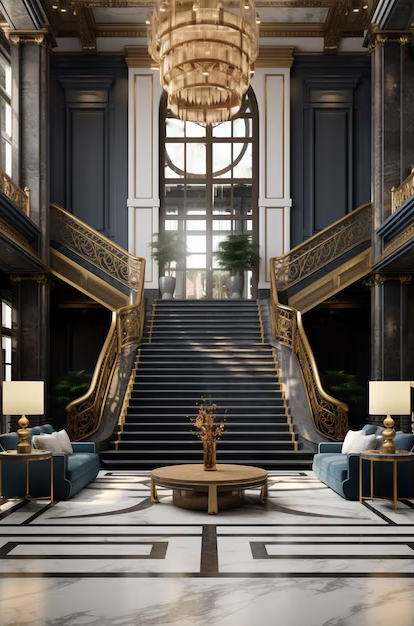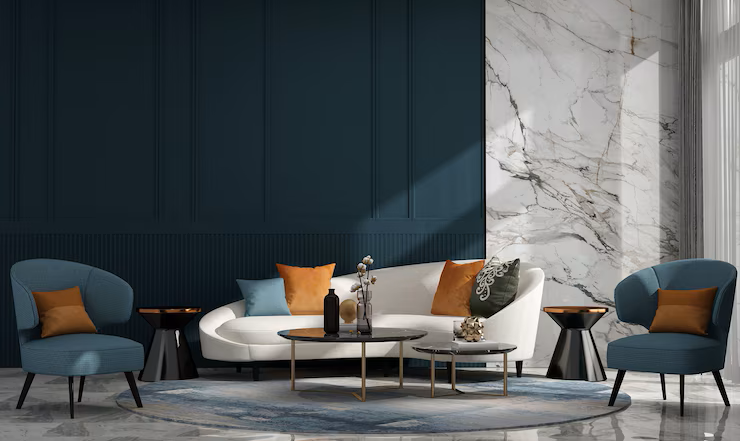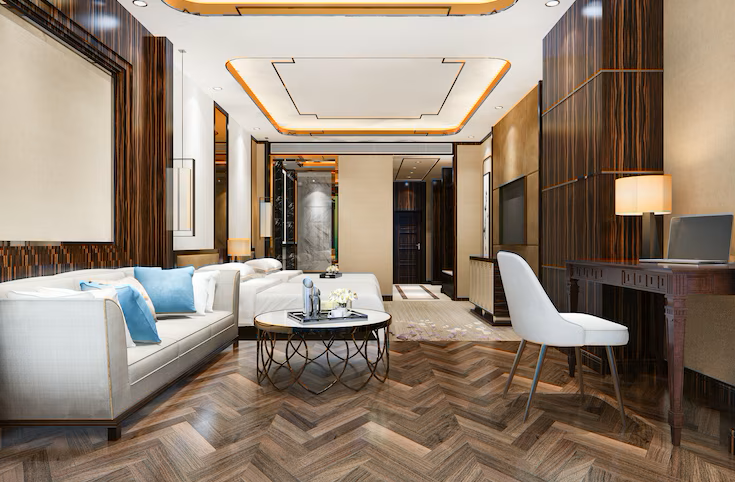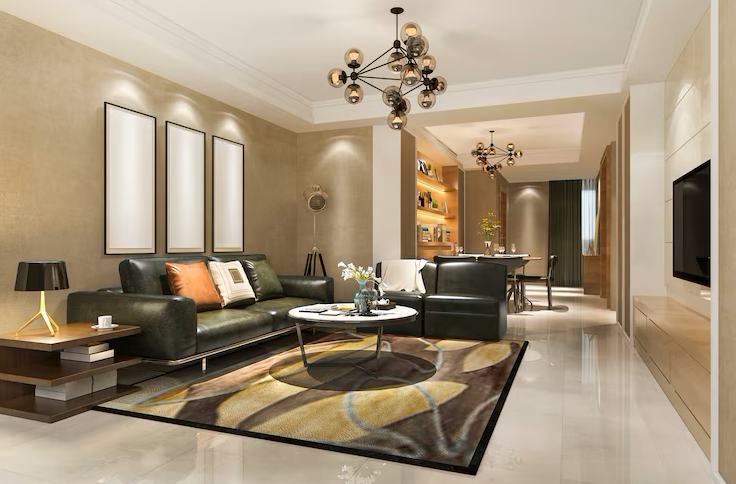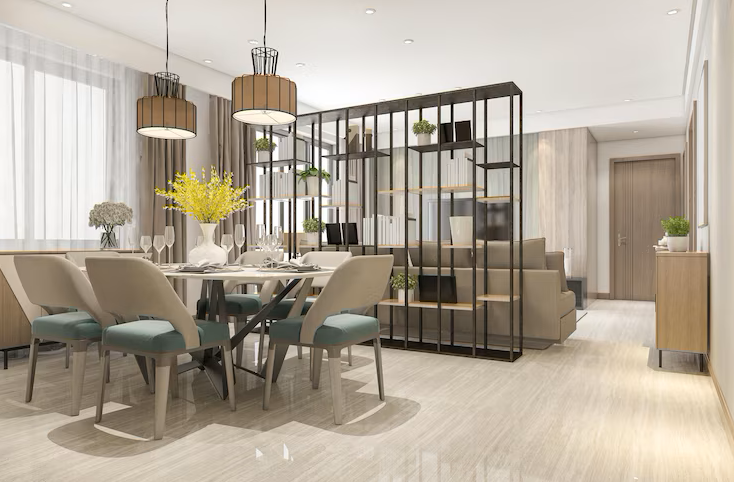Interior Designers in Chennai: Navigating the Environmental Clearance Process
When it comes to shaping modern living or commercial spaces, Interior Designers in Chennai do more than just blend colours, furniture, and lighting. In today’s regulatory landscape, they also play a crucial role in navigating complex legal frameworks—particularly environmental clearances. Whether working on a residential tower, corporate office, or a boutique retail outlet, complying with environmental norms is essential to avoid project delays, fines, and reputational risks.
This blog explores how Interior Designers in Chennai assist clients in understanding, acquiring, and complying with environmental clearance (EC) requirements to create designs that are not just stunning, but also sustainable and lawful.
Understanding Environmental Clearance in Chennai
Environmental Clearance is a mandatory process governed by the Ministry of Environment, Forest and Climate Change (MoEFCC) under the Environment Protection Act, 1986. In Chennai and across Tamil Nadu, projects exceeding a certain size or impacting ecological parameters (like green cover, air quality, or water usage) must get EC approval before starting construction or renovation.
This requirement typically applies to:
-
Residential projects over 20,000 sq. meters
-
Commercial complexes, malls, and IT parks
-
Hotels and hospitals
-
Coastal Regulation Zone (CRZ) areas
-
Projects near sensitive ecosystems like wetlands or forests
While EC is mainly an architectural and builder responsibility, Interior Designers in Chennai must be acutely aware of these regulations—especially when handling large-scale renovations or collaborating with developers and architects from the start.
Why Interior Designers Need to Understand EC
Even if a project already has its EC approved, the scope of interiors can still have environmental implications, such as:
-
Energy usage (lighting, HVAC design, automation)
-
Material selection (imported marbles, woods, paints)
-
Waste management (during demolition and fit-outs)
-
Water efficiency (plumbing fixtures, greywater systems)
-
Sustainable sourcing (eco-certified furnishings and decor)
Chennai’s growing focus on sustainable development and green building certifications like GRIHA or LEED makes it essential for Interior Designers in Chennai to design within the EC framework.
The Role of Interior Designers in the EC Process
1. Collaboration from the Planning Stage
Leading Interior Designers in Chennai work hand-in-hand with architects and developers during the early design phase. This ensures interior layout, materials, and systems align with EC conditions.
For instance, a green-certified residential project may require the use of low-VOC (volatile organic compound) paints and sustainably sourced wood. By collaborating early, interior designers ensure such choices are made upfront.
2. Material & Vendor Compliance
Interior designers often vet suppliers to ensure materials conform to EC norms. This includes:
-
FSC-certified wood
-
Non-toxic adhesives and sealants
-
Energy-efficient lighting (LED, smart systems)
-
Locally sourced stones to minimize carbon footprint
With many Chennai-based vendors now offering eco-certified materials, Interior Designers in Chennai are well-positioned to make informed and compliant choices.
3. Waste Minimization & Site Supervision
Renovation projects can generate large volumes of debris. Designers ensure proper waste segregation, recycling, and disposal protocols are followed, which is often part of EC compliance.
They may also incorporate modular furniture or reusable partitions to reduce wastage and improve adaptability for future changes—adding both design and environmental value.
4. Documentation & Reporting Support
For projects seeking green certifications or those under government monitoring, documentation is key. Interior designers support by providing:
-
Material datasheets and certificates
-
Energy calculation reports (for lighting and AC)
-
Layout plans showing natural ventilation and daylight use
This detailed reporting supports builders and consultants during EC compliance audits.
5. Post-Occupancy Compliance
Even after completion, Interior Designers in Chennai may be involved in audits or post-occupancy evaluations. They help verify that materials installed match the approvals and that energy/water performance targets are being met.
Real-Life Example: An Eco-Friendly Office in OMR
An MNC setting up a 50,000 sq. ft. office in Chennai’s IT corridor required both EC and LEED certification. The interior designer took the lead in choosing recycled flooring, motion-sensor LED lighting, and a green wall for indoor air purification. By aligning their designs with EC conditions and sustainability goals, the project secured approvals smoothly and was up and running in record time.
Challenges in the EC Process—and How Designers Overcome Them
-
Lack of Awareness: Many clients don’t understand EC implications. Designers bridge this gap by educating clients early.
-
Conflicts with Aesthetics: Some sustainable materials may seem restrictive. Experienced designers strike a balance between visual appeal and eco-compliance.
-
Budget Constraints: Green materials can be costlier. Designers help prioritize essential features that offer both environmental and long-term economic value.
The Future: Sustainable Design as the Norm
With Chennai witnessing a steady rise in eco-conscious clients, Interior Designers in Chennai are increasingly integrating EC norms into their standard workflow. They’re not just decorators—they’re strategic contributors to green building practices, ensuring every space they design is ethical, efficient, and environmentally responsible.
In the coming years, as regulations tighten and climate impact becomes central to design decisions, interior designers who are well-versed in EC procedures will lead the industry transformation.
Conclusion
Environmental clearance is no longer just a bureaucratic formality—it’s a vital aspect of responsible interior design. Interior Designers in Chennai who understand and support the EC process are shaping a future where aesthetics meet ethics, and compliance meets creativity.
So whether you’re revamping a luxury villa, building an office space, or designing a retail haven, make sure your interior designer isn’t just creative—but also conscious of the environment.

